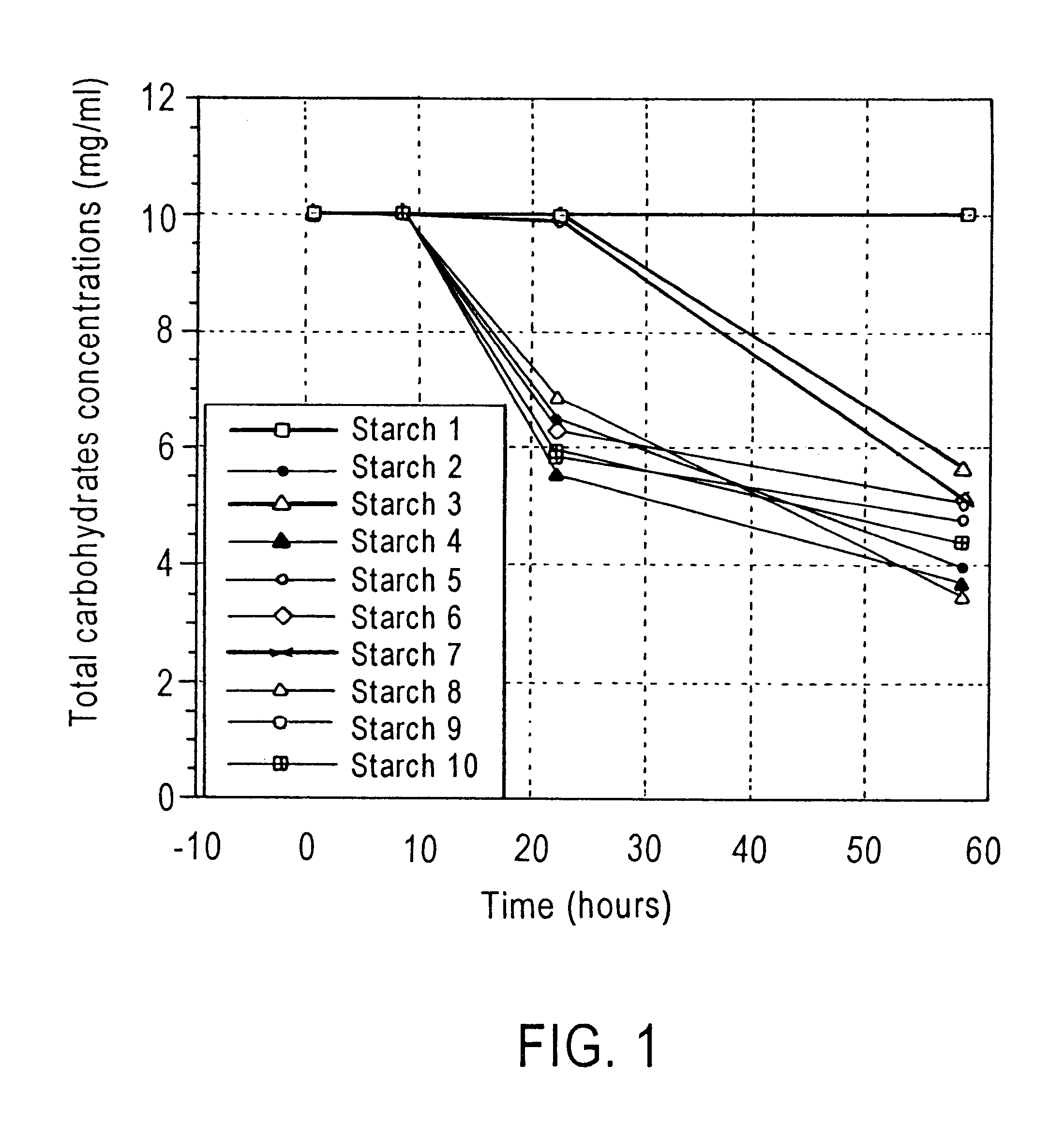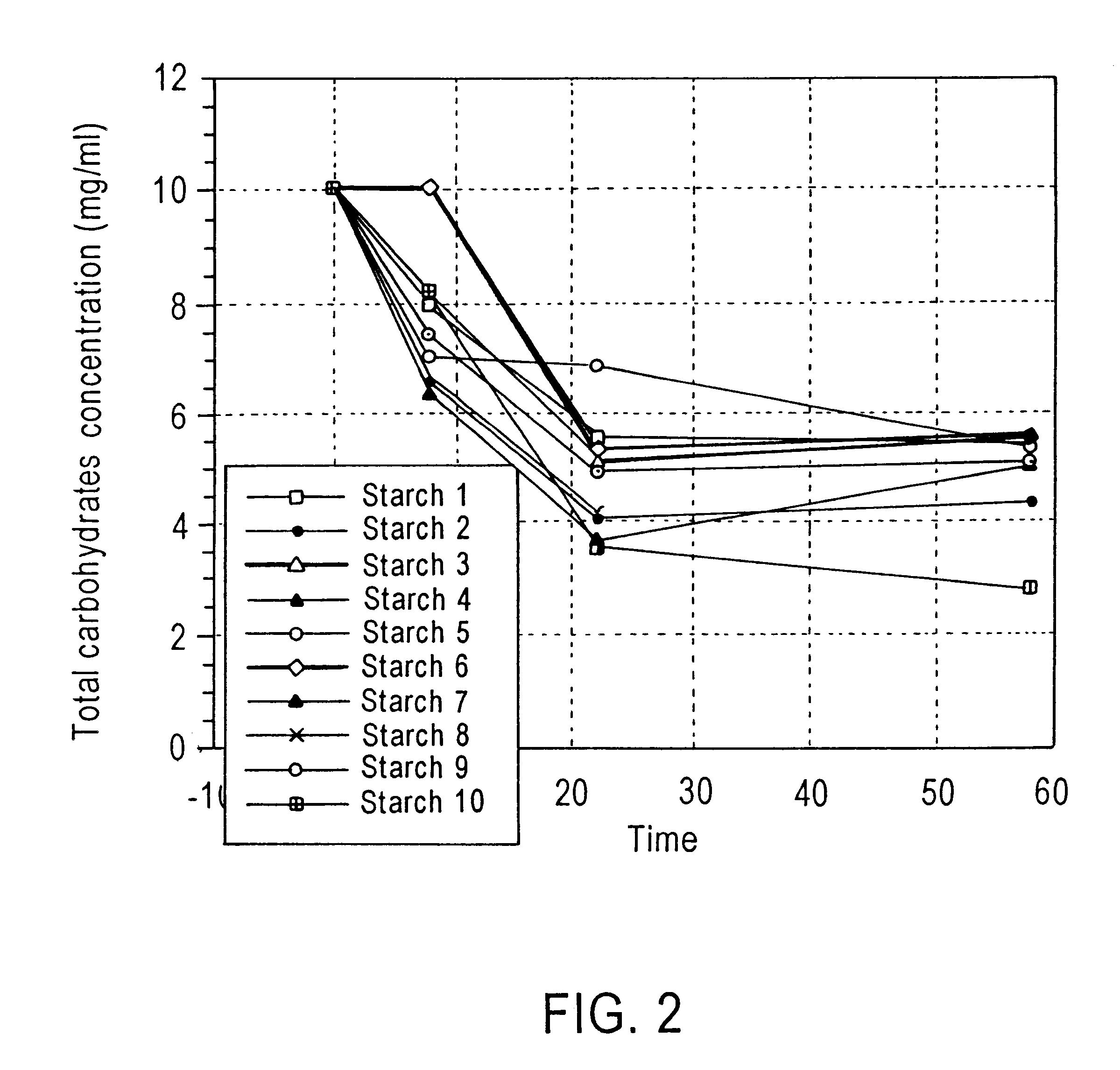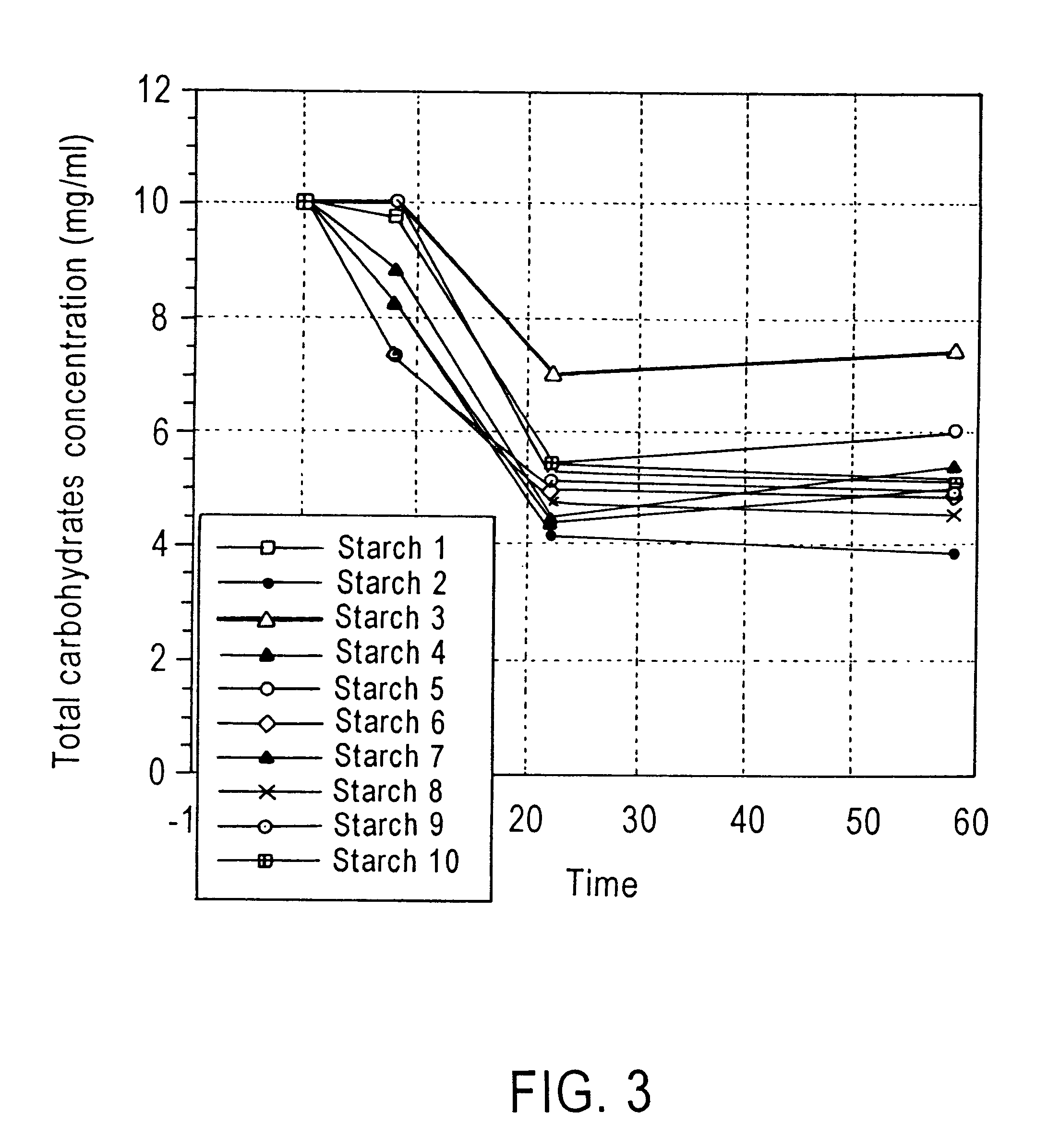Alteration of microbial populations in the gastrointestinal tract
a technology of microbial populations and gastrointestinal tract, which is applied in the direction of biocide, drug composition, and medical ingredients of bacteria material, can solve the problems that the microorganisms in the proximal colon may not be able to effectively use the resistant starch selected, and achieve the effect of increasing the number and/or
- Summary
- Abstract
- Description
- Claims
- Application Information
AI Technical Summary
Benefits of technology
Problems solved by technology
Method used
Image
Examples
example 2
The effect of a number of probiotic compositions has been studied by enumerating coliforms and salmonella in vitro in the presence of resistant starch and modifications of resistant starch singly or together with bifidobacteria when the system has been challenged with Salmonella. More specifically, aliquots (1 ml) of human faecal homogenates (10 g per 100 ml diluent) were added to diluted WC broth (diluted 50:50 with 0.05M phosphate buffer) to which were added the resistant starch and modifications thereof referred to as Starches 1 to 10. For each of the starches, parallel tubes were prepared with one set being inoculated with various Bifidobacterium spp. All mixtures were then inoculated with salmonella and sampled after 0, 2, 6 and 9 hours incubation. Results are expressed as the numbers of coliforms when enumerated as colony forming units per ml using MacConkey No 1 agar (FIGS. 9a, b and c). It can be seen that when resistant starch (FIG. 9) is added together with bifidobacteria,...
example 3
In addition to studying a reduction in coliform numbers as indicators of pathogens, an effect of a pathogen on the host has been studied in viva in the presence of resistant starch and modifications of resistant starch singly or together with bifidobacteria when the system has been challenged with salmonella. The parameter investigated was weight loss after salmonella administration. The experimental design is as follows: Mice were fed a defined diet (Table 4) and groups A, B, C and E were orally dosed with bifidobacteria (200 microliter per day). All groups received a single oral dose of Salmonella sp (0.1 ml containing about log 8 viable cells) and were monitored daily for weight lose.
Results are presented in FIG. 10 and show that the combined dosage of resistant starch and bifidobacteria prevented the weight loss induced by oral administration of salmonella. This effect was affected by the particular modification of the resistant starch since the modification tested, namely carbo...
example 4
Screening the Colonic Bacteria and Probiotic Bacteria of the Adhesion to Starch Granules
Adhesion test in the buffer pH 6.8
The adhesion of colonic bacterial strains and probiotic strains to amylose starch granules was detected directly by using light microscopy. The bacterial strains included Bif. X8AT1, Bif. X8AT2, Bif. X13AT2, Bif. bifidum, Bact. vulgatus, Lact. fermentum KLD, Lact. casei, Lact. bulgaricus and Lact. sp. B49. Starches used in the experiments are shown in Table 2.
Bacterial cells were collected from 2 ml overnight cultures in PYG medium be centrifuging 13,000 rpm for 5 mins. After discarding the supernatent, the pellet washed with 2 ml PBS buffer (12.1 g K.sub.2 HPO.sub.4, 3.4 g KH.sub.2 PO.sub.4, 85 g NaCl, dissolved in 1 L distilled water, pH 6.8), finally resuspended in 1 ml of PBS and pH 2.5 buffer. The starch solution were prepared as following: 10% of all type of starches were individually suspended in 5 ml PBS buffer. The mixtures were heated at 90.degree. C. f...
PUM
| Property | Measurement | Unit |
|---|---|---|
| Fraction | aaaaa | aaaaa |
| Fraction | aaaaa | aaaaa |
| Fraction | aaaaa | aaaaa |
Abstract
Description
Claims
Application Information
 Login to View More
Login to View More - R&D
- Intellectual Property
- Life Sciences
- Materials
- Tech Scout
- Unparalleled Data Quality
- Higher Quality Content
- 60% Fewer Hallucinations
Browse by: Latest US Patents, China's latest patents, Technical Efficacy Thesaurus, Application Domain, Technology Topic, Popular Technical Reports.
© 2025 PatSnap. All rights reserved.Legal|Privacy policy|Modern Slavery Act Transparency Statement|Sitemap|About US| Contact US: help@patsnap.com



